A Brief History of Svalbard
The history of Svalbard is a fascinating tale of exploration, exploitation, and international intrigue. First spotted in 1596 by Dutch explorer Willem Barentsz, Svalbard quickly became a hotspot for whaling and hunting, especially of whales and land mammals such as the arctic fox and polar bear, drawing adventurers and workers from Europe. In the 19th and early 20th centuries, coal mining became the dominant industry, with countries establishing settlements to stake their claims. The 1920 Svalbard Treaty recognized Norwegian sovereignty while allowing all signatory countries equal rights to commercial ventures, a unique arrangement that continues today. Beerenberg (2,227 m) is Norway’s only active volcano; having been dormant for years, volcanic activity resumed in 1970 with the most recent eruption occurring in 1985. Throughout its history, Svalbard has been a frontier of Arctic exploration, a site of geopolitical importance, and a living example of international cooperation in managing and researching one of the world’s most extreme environments.
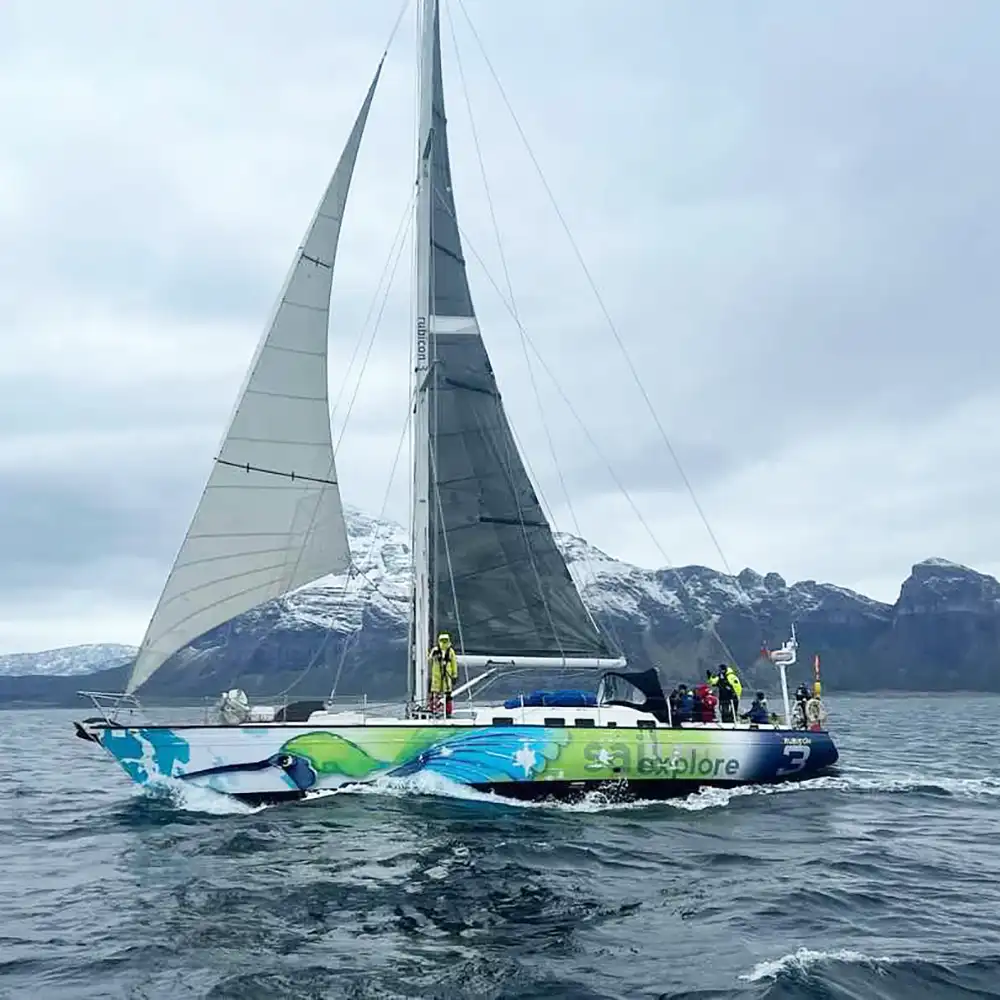
Itinerary
The exact weather conditions and sea ice levels at the time will determine what happens on this expedition. Offshore sailing at these high latitudes is a serious undertaking and the priority will be making a safe and sensible choice of when to head south toward Iceland. We will explore as much as we can in Svalbard before leaving. We run an exploration of the west coast of Svalbard before this route and together they make a great combined route.
Here are some of the highlights of the route.
Longyearbyen
This small but vibrant community is the gateway to the Arctic’s remote wilderness and where the expedition begins. Nestled amidst the glaciated mountains, this town is an authentic blend of Norwegian and polar cultures. Visit the Svalbard Museum while you’re here to learn more about the history of Spitsbergen, its mining industry, and polar exploration over the years.
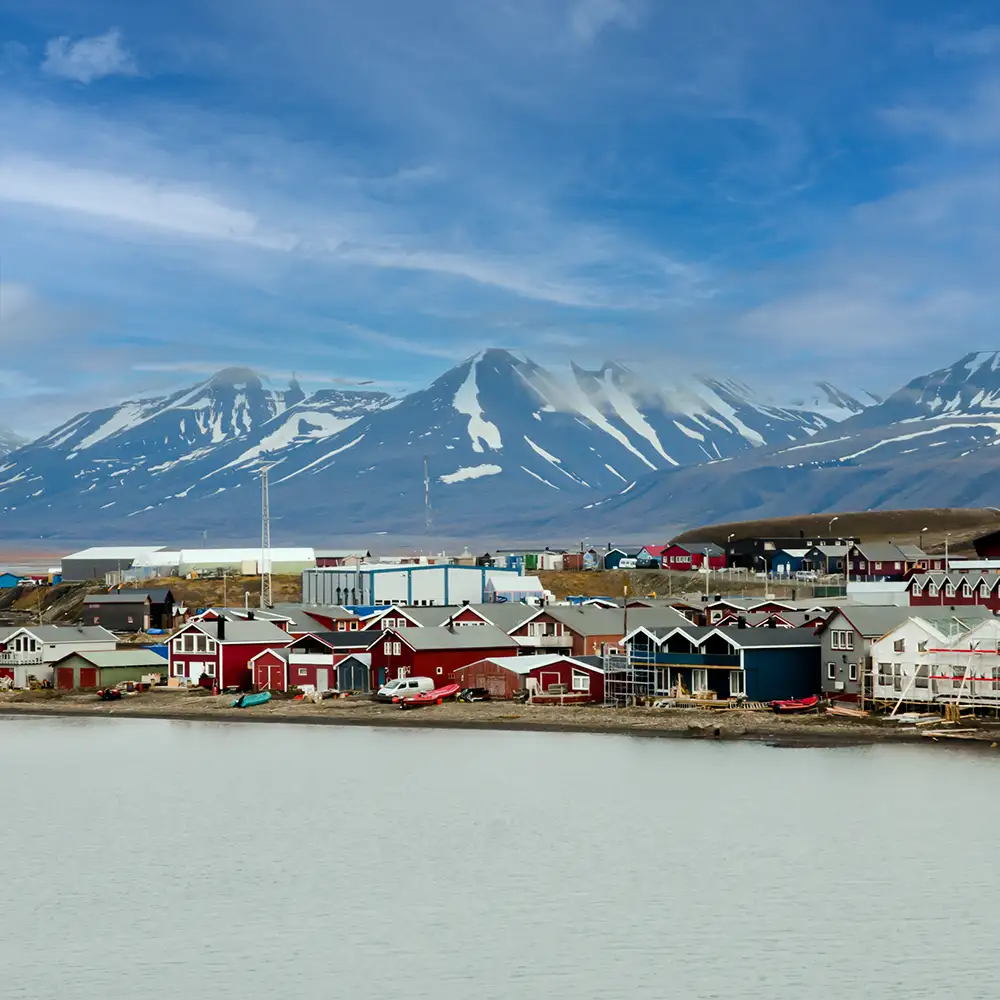
Trygghamna
Translating to “Safe Harbor” in English, Trygghamna is a stunning bay that historically served as a crucial anchorage for whalers and explorers due to its sheltered waters, which provided refuge from the harsh Arctic conditions. The bay is home to thousands of seabirds, including guillemots and kittiwakes, surrounded by towering cliffs and glaciers. The area around Trygghamna is also rich in Arctic flora, and you may see Svalbard reindeer and Arctic foxes. The historical remnants of blubber ovens also bear witness to its past, mixing the bay’s natural beauty with a touch of human history.
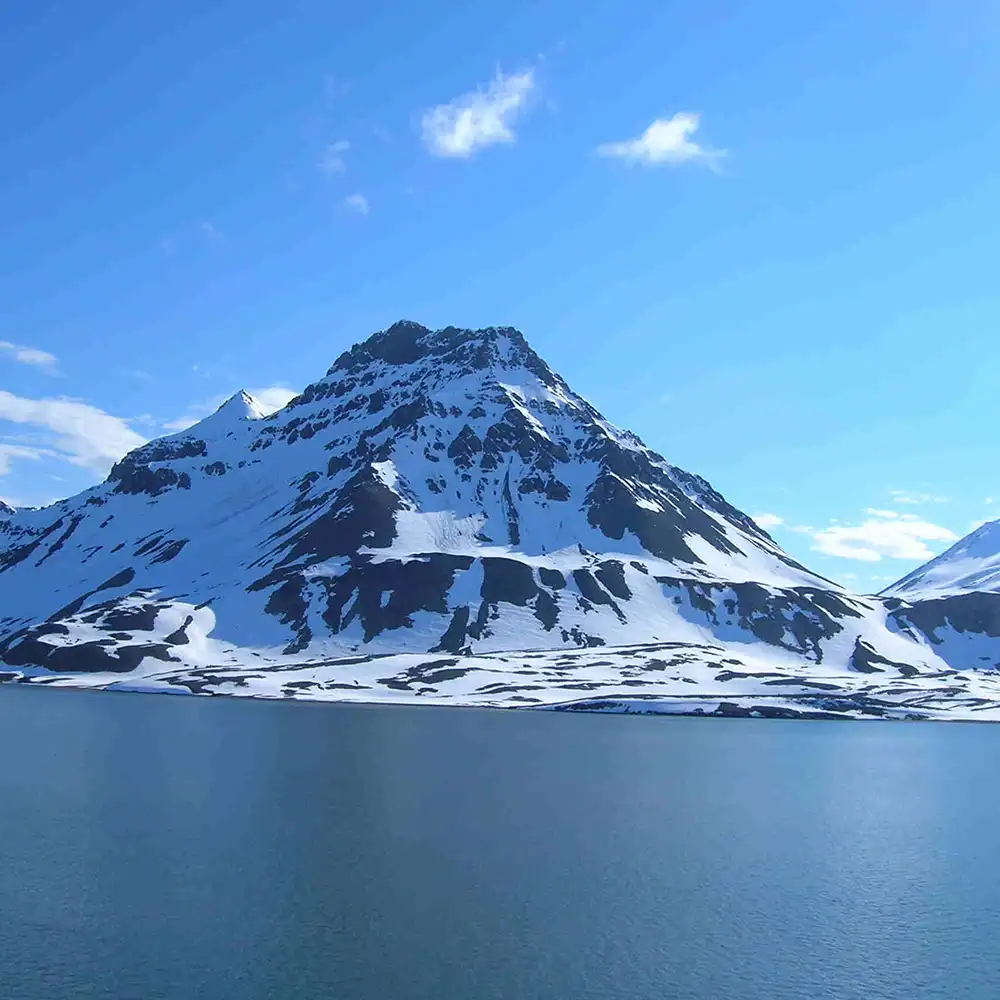
Offshore sailing: passage to Jan Mayen
When the weather window is at its best, we will leave the glaciated shores of Svalbard behind us and head out into the wilds of the Arctic Ocean. We will be sailing day and night for around 4 days, in a watch system, helming, navigating, trimming sails, keeping a lookout and with plenty of time to gaze out over the vast arctic horizon as we surge south.
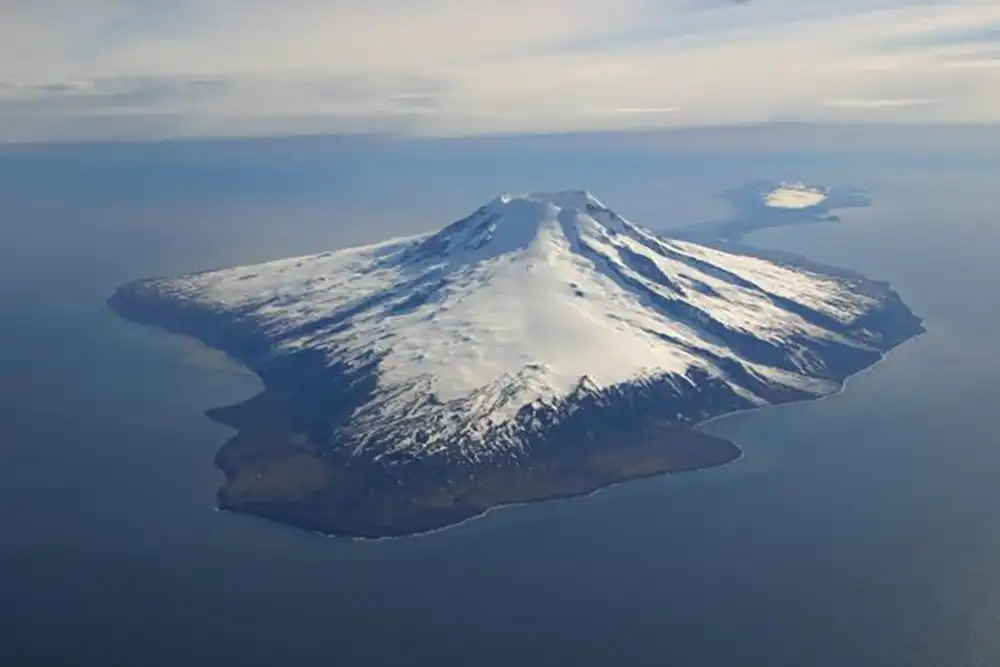
Jan Mayen
Seeing the small island of Jan Mayen rise over the horizon is always an exciting moment. Whether we can land here depends entirely on the weather and sea state – and it is certainly not guaranteed – but if we are lucky we will be able to land and spend a day exploring. This desolate, mountainous island was named after a Dutch whaling captain who discovered it in 1614. Jan Mayen is situated approximately halfway between mainland Norway and Greenland. This rugged, mountainous island is dominated by Beerenberg, the northernmost active volcano on Earth, which last erupted in 1985. The island is uninhabited, except for a small Norwegian meteorological research station that operates year-round. Other than ice, it is marked by moss and grass flora. The island consists of two parts: a larger northeast Nord-Jan (the spoon “bowl”) and the smaller Sor-Jan (the “handle”), linked by a 2.5 km-wide isthmus (the “stem”) with two large lakes, Sorlaguna (South Lagoon) and Nordlaguna (North Lagoon). The island’s isolation, harsh climate, and limited access make it a unique natural environment, primarily known for its significant meteorological, geophysical, and oceanographic research contributions. The island holds a special place in the hearts of adventurers and scientists alike.
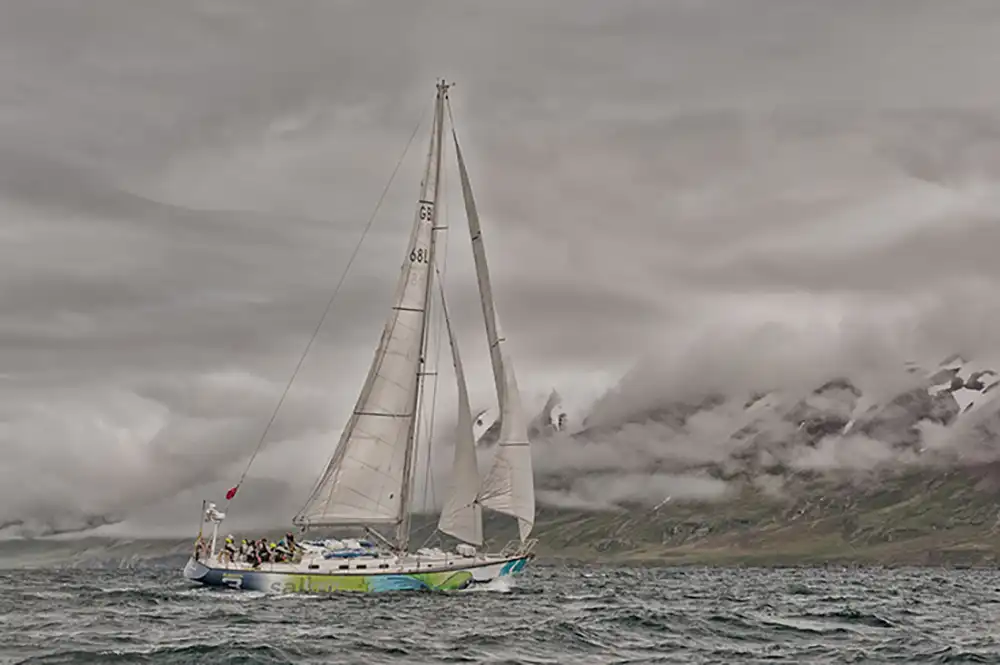
Offshore sailing: passage to Iceland
From Jan Mayen, it’s another 400 miles to the northeast coast of Iceland, so we can expect to be at sea for another 2-3 days, during which time we will cross the Arctic Circle. Iceland’s east coast is marked by huge mountain ranges and deep fjords and there are only a few places where it is safe to make landfall. With any spare time we have left, we will cruise and explore this coast, before rendering Seydisfjord on the southeastern coast and the end point of our adventure. Magical!
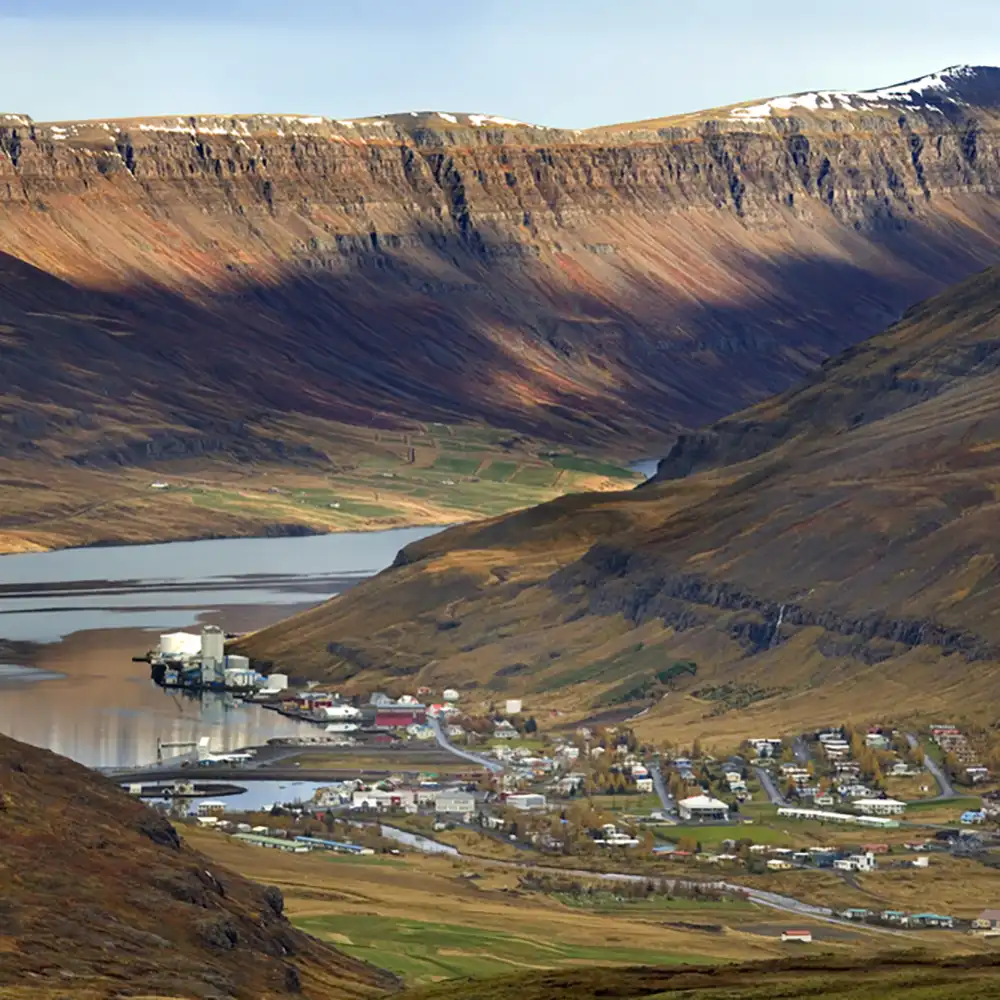
Iceland
This tough, wild island, whose dominant religion is Lutheranism, is an awe-inspiring testament to nature. It has a wonderful and dramatic history, most famously told in the Icelandic sagas, which recount heroic episodes and are regarded as among the finest literary achievements of the Middle Ages. Unlike most European countries, it is ethnically homogeneous making it a favourite population to study by academics. The climate is affected by the confluence of two ocean currents: the Gulf Stream, from near the Equator, and the East Greenland Current. The latter sometimes carries Arctic drift ice as far as Iceland’s northern and eastern shores.